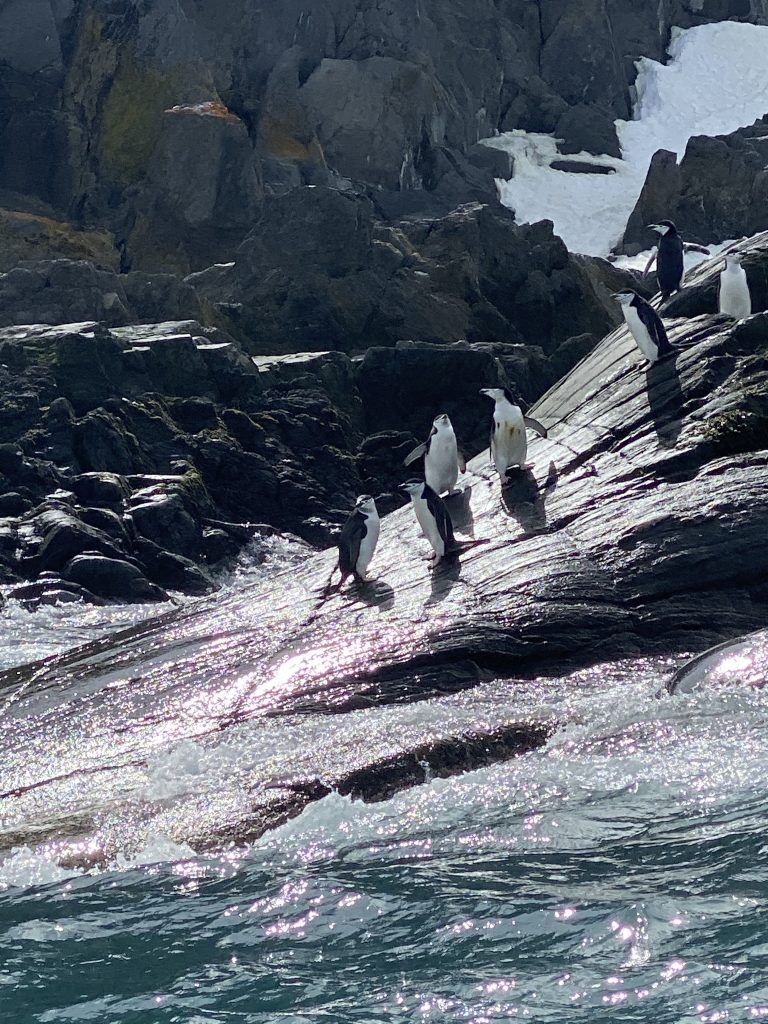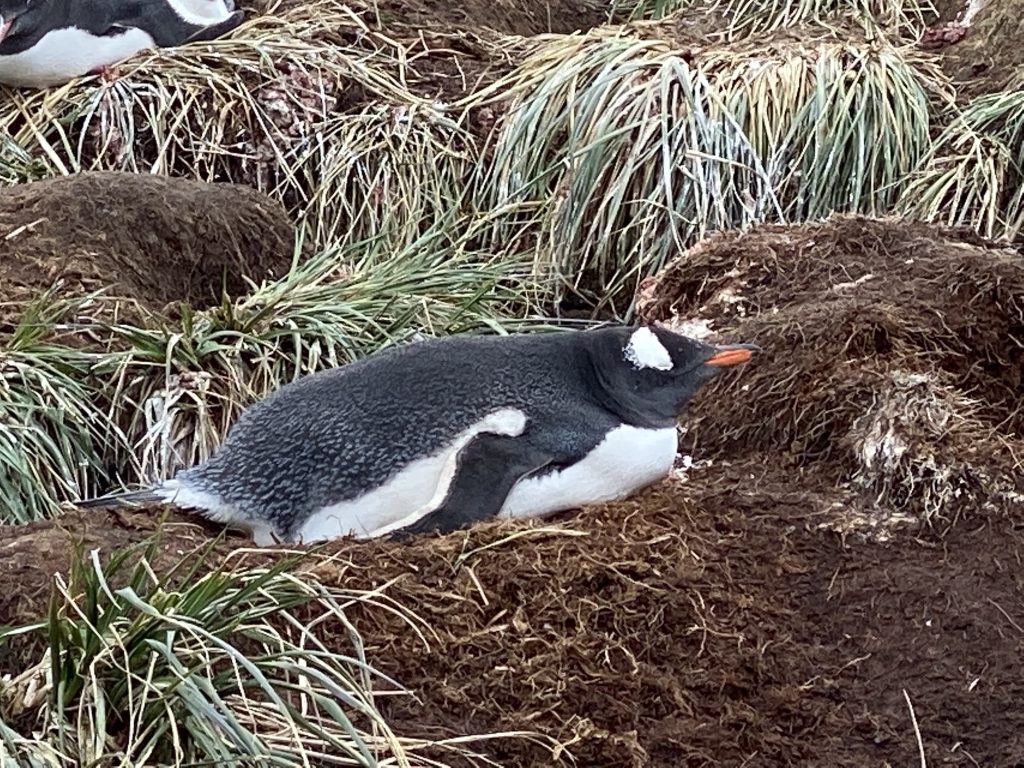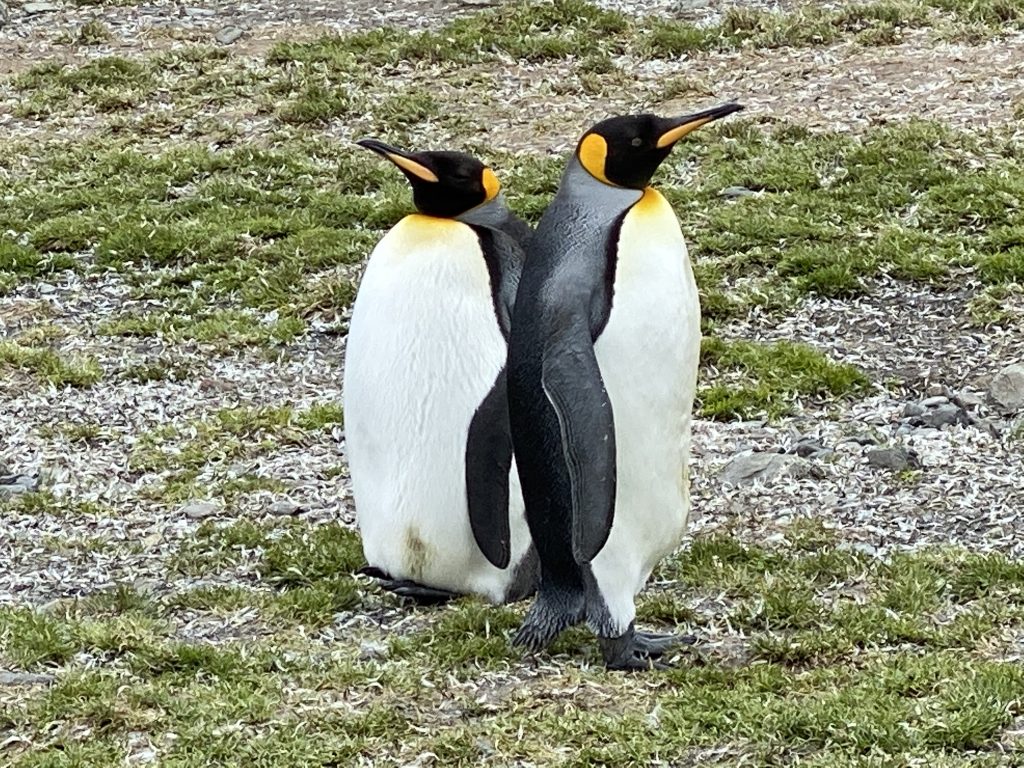
The planet’s magnificent, mysterious, and utterly vital blue heart is brimming with life, regulating climate, and providing immense beauty and wonder. Among its most iconic inhabitants, and top of my list, are penguins; creatures that symbolise the pristine wilderness of the polar regions and capture the imagination of many, not just me! A profound passion for the planet, its incredible wildlife, and particularly the spectacular island of South Georgia inspires my deep appreciation for these remarkable birds.
However, it is easy to feel overwhelmed by the sheer scale of environmental challenges facing the planet, with news often painting a grim picture. Even these seemingly resilient creatures are now facing unprecedented threats.
The latest research findings regarding penguins are not merely academic curiosities; they are critical indicators of the planet’s health and a powerful call to informed action. The belief that every person can make a difference to the planet, contributing to its restoration and preservation for future generations, underpins the urgency of understanding these scientific revelations.
The Alarming Truth: Emperor Penguins in Peril
Emperor penguins stand as a poignant example of the direct and severe impacts of climate change. According to experts such as Peter Fretwell of the British Antarctic Survey, emperor penguins are perhaps the clearest illustration of climate change’s effects on a species. Unlike many other species, their populations are not primarily pressured by fishing, habitat destruction, or pollution; the overwhelming factor is climate change itself, placing them squarely at the “pointy end” of this global crisis.1

Recent satellite imagery analysis paints a troubling picture of their decline. A new study, based on satellite photos taken between 2009 and 2024, monitored 16 emperor penguin colonies across the Antarctic Peninsula, Weddell Sea, and Bellingshausen Sea. These colonies represent nearly a third of the total global emperor penguin population. The findings reveal a dramatic 22% decline in these populations during that 15-year period.1 This reduction is significantly worse than previous estimates, which projected a 9.5% decline across Antarctica as a whole between 2009 and 2018. The accelerated rate of decline, estimated to be approximately 50 percent worse than even the most pessimistic computer models, suggests that the environmental changes are unfolding more rapidly and severely than anticipated. This challenges prior understandings of the timeline for climate impacts and underscores that the urgency for action is even greater than previously thought.1
The primary driver of this decline is the loss of stable sea ice, which is crucial for emperor penguin breeding. These iconic Antarctic birds depend on stable fast ice to breed, yet climate change threatens their icy habitats.5 Warming temperatures are causing the ice beneath their feet to thin and destabilise.1 Major ice calving events, such as those observed at the Mertz and Sanae colonies, have forced penguins to relocate, often to less stable areas where early fast ice break-outs threaten breeding success.5 The consequences are dire: entire cohorts of chicks can be lost as the ice gives way, plunging them into the freezing sea before they are old enough to cope with the cold water.1 Increased rainfall, another consequence of a warming climate, can soak and freeze chicks before their waterproof feathers develop, further reducing their chances of survival.3
Beyond the direct impact of ice loss, a cascade of effects further imperils these fabulous penguins. As sea ice breaks up earlier in the year, predators like leopard seals and orcas can gain closer access to the colonies, increasing the threat to adult penguins and their young.4 Then there is Antarctic krill! Sea ice is vital for Antarctic krill, a keystone species that relies on it for protection and reproduction.5 Less sea ice equals fewer krill, directly impacting the food supply for penguins and disrupting the broader marine food web. This complex web of interconnected ecological impacts, where the primary effect of sea ice loss triggers a sequence of secondary and tertiary disruptions, highlights the profound interdependence and fragility of polar life.
While emperor penguins are dynamic and have shown some capacity to move, even onto ice shelves and icebergs when fast ice is available, their adaptability has its limits.3 Not every colony will successfully relocate or survive, and there are finite suitable locations. If too many colonies attempt to move to the same areas, they’ll face increased competition for space and resources.3 This suggests that the current rate and scale of environmental change are pushing species beyond their natural adaptive capacities. The speed of human-induced warming is proving too rapid for many species to effectively evolve or relocate, emphasising that human action is required to mitigate these changes, rather than simply hoping for natural adaptation.
Echoes from the Past: Surprising Penguin Discoveries
While the present challenges are stark, recent paleontological discoveries offer a fascinating glimpse into the long and robust evolutionary history of penguins, effectively rewriting parts of their story. Fossils unearthed in New Zealand have revealed Kumimanu fordycei, a giant penguin species from the Paleocene epoch, dating back approximately 57 million years. Weighing around 350 pounds, this discovery indicates that penguins developed large body sizes much earlier in their evolutionary history than previously thought.7 Another new species,
Petradyptes stonehousei, weighing around 50 kilograms, lived alongside Kumimanu, highlighting the early diversity and ecological success of penguins.7
More recently, a new species of fossil penguin, Eudyptula wilsonae (Wilson’s little penguin), was discovered in three-million-year-old sediments in New Zealand. This species is identified as a possible ancestor of the kororā little penguin, the smallest living penguin species.8 The physical characteristics of these little penguins have remained largely unchanged across three million years, despite substantial environmental shifts during that time.8
These discoveries demonstrate penguins’ remarkable evolutionary success and their ability to adapt to significant natural environmental changes over millions of years. However, this historical resilience stands in stark contrast to their current rapid decline driven by human-induced climate change. This distinction underscores that the present threats are not merely cyclical natural phenomena but are unprecedented in their speed and scale, driven by human activity. The current crisis is fundamentally different from the natural evolutionary challenges faced by ancient penguins, making the need for contemporary human intervention paramount.
In a poignant connection between scientific discovery and conservation, Eudyptula wilsonae was named after the late New Zealand ornithologist and conservation advocate Kerry-Jayne Wilson.8 This act of naming a newly discovered species after a dedicated conservationist subtly but powerfully links scientific understanding directly to the human endeavour of conservation and advocacy. It reinforces in us the idea that understanding nature naturally leads to a responsibility to protect it, aligning perfectly with the mission to inspire individual action and emphasising the human role in both comprehending and safeguarding the planet.
I am lucky enough to be on an expedition attempting to see Emperor Penguins at Snow Hill, in the Weddell Sea this coming November and hope to learn more about these significant creatures during the trip.
Beyond Emperors: Other Penguin Stories & Emerging Threats
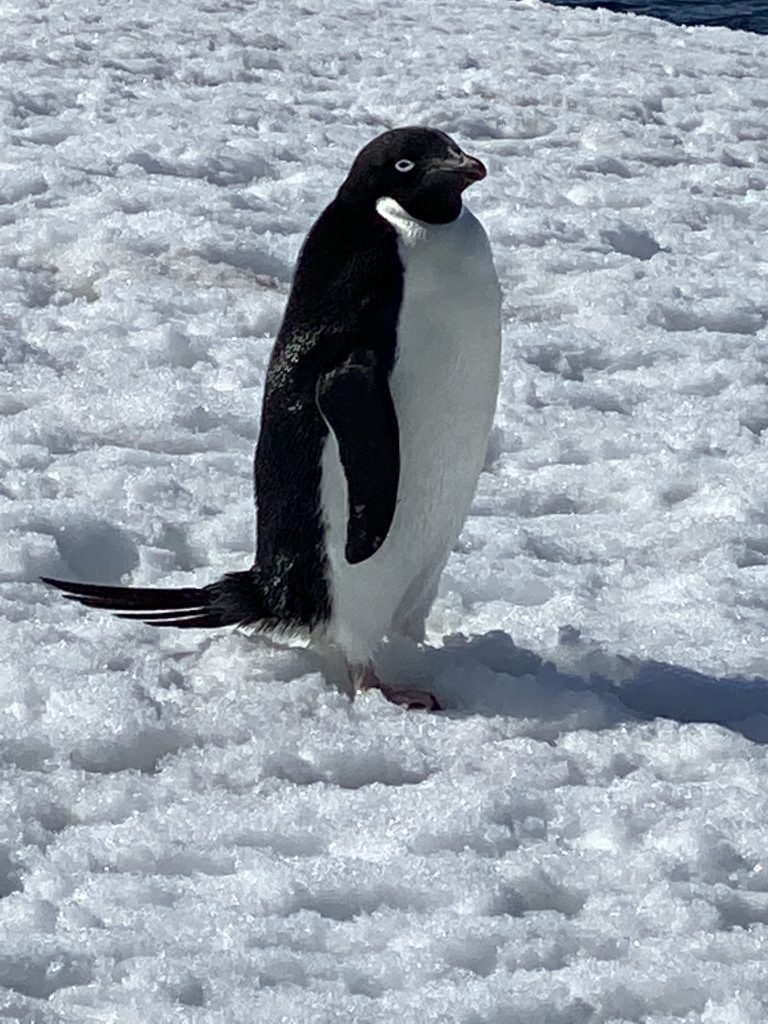
While emperor penguins face the brunt of climate change’s impact, other penguin species offer additional perspectives on population dynamics and emerging threats. Adélie penguins, for instance, show a complex response to changing conditions. Their populations are observed to decline with sea-ice reduction in the maritime portion of Antarctica, yet they are increasing further south.9 While an increase in populations in colder regions might appear as a positive sign of adaptation, it is more accurately interpreted as a geographic displacement rather than a true solution. On our trip to Falklands, South Georgia Island and Antarctica in November 2019, we saw several single Adélie penguins in amongst Gentoo colonies, and were advised, it not was a positive sign!
As ice melts in one area, penguins may temporarily find refuge in more stable regions. However, this is a finite resource, and eventually, these “refuge” areas will also be impacted. This reinforces that such shifts are short-term coping mechanisms, not long-term solutions, and do not negate the overall trend of habitat loss and population decline, ultimately underscoring the need for systemic change.
Scientists are employing cutting-edge research methods to monitor and understand penguin behavior with unprecedented detail. Penguin-borne sensors are being deployed to track juvenile Adélie penguins at sea, evaluate foraging conditions, and gain new insights into population dynamics.10 High-resolution recording of foraging behaviour has even revealed a decline in the performance of older Adélie penguins.9 Additionally, remote camera networks are being used to track Antarctic species and monitor reproduction at a low cost.11 This technological advancement in conservation allows for more accurate data on survival rates, foraging habits, and environmental responses, which is critical for developing highly targeted and effective conservation strategies. It signifies that our capacity to understand and respond to environmental challenges is growing, offering a glimmer of hope through scientific innovation.
A new, acute biological threat has also emerged: Highly Pathogenic Avian Influenza (HPAI). In March 2024, HPAI was confirmed in gentoo and king penguin colonies on South Georgia, following its detection in the brown skua population in October 2023.12 The virus has also affected other species in the region, including kelp gulls, wandering albatrosses, elephant seals, and Antarctic fur seals.12 While the effects appear localised and the risk to human health remains very low, this outbreak introduces an additional layer of complexity to penguin conservation, beyond the well-known challenges of climate change and fishing. This demonstrates that environmental challenges are not static but are dynamic, with new threats emerging that require rapid and adaptive responses. It underscores the need for continuous monitoring and robust biosecurity measures, especially in vulnerable, isolated ecosystems like South Georgia.
This emerging threat also highlights another crucial aspect of responsible travel. For those visiting sensitive territories like South Georgia, adherence to established biosecurity procedures is paramount. This includes decontaminating clothing, footwear, and field equipment before and after any landing between regions and sites.12
Responsible tourism extends beyond minimising one’s carbon footprint; it is also about preventing the spread of diseases and invasive species as the actions of travellers have a direct, tangible impact on the health and safety of wildlife populations.
Beyond the polar regions, other penguin species face different, yet equally severe, human-driven impacts. African penguin populations, for example, have plummeted to less than 1% of their size a century ago.13 While habitat degradation, oil spills, heavy shipping traffic, and seismic activity from offshore oil and gas prospecting contribute to their decline, the biggest current threat is difficulty in finding food due to unsustainable fishing practices.13 Conservation efforts are underway, with organisations like the Maryland Zoo caring for the largest colony of African penguins in North America and supporting initiatives like the African Penguin SAFE (“Saving Animals From Extinction”) program. Projects like the Chick Bolstering Project rescue abandoned chicks, raising them until they are strong enough for release, with high success rates.
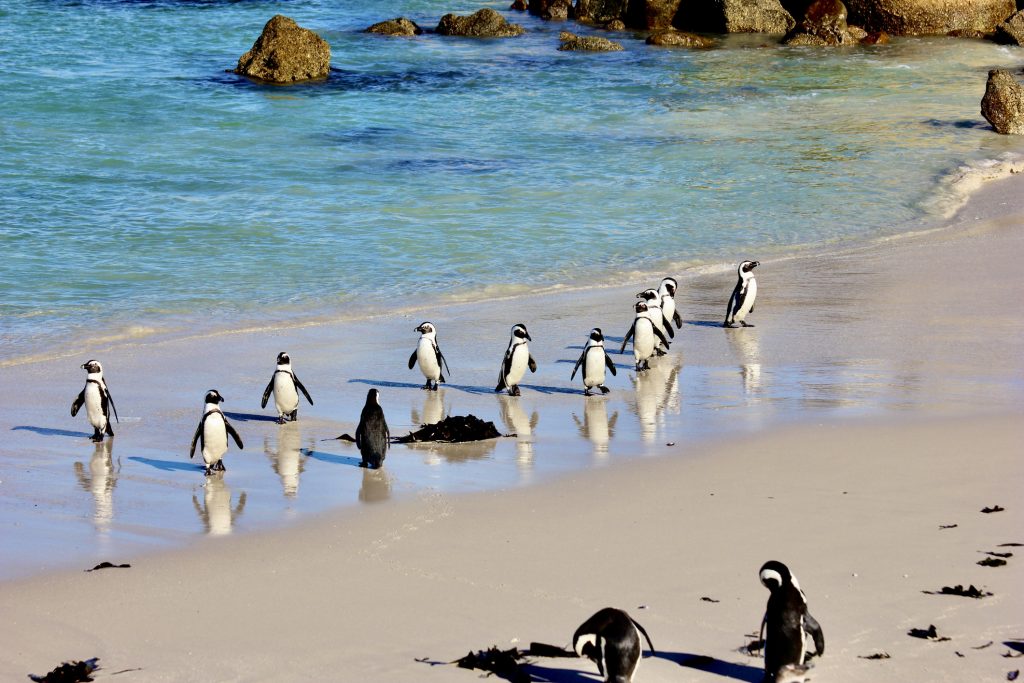
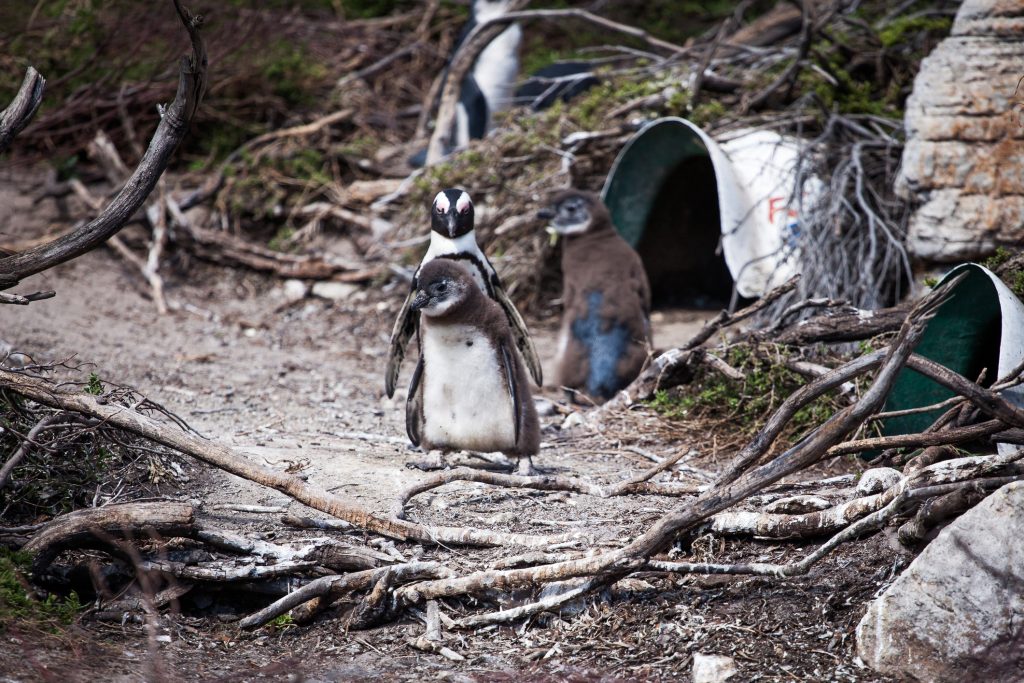

Efforts are also focused on developing new facilities like NAMCOB in Namibia to protect colonies.13 This broader narrative illustrates that conservation requires addressing a diverse range of human activities, not just greenhouse gas emissions. The emphasis on unsustainable fishing practices highlights that collective “water footprint” and “food footprint” extend far beyond immediate consumption, directly impacting distant ecosystems and species.
The following table summarises the key threats faced by various penguin species:
| Penguin Species | Primary Threats | Underlying Causes | Key Impact |
| Emperor | Sea Ice Loss | Climate Change | Breeding failure, chick mortality |
| African | Food Scarcity | Unsustainable Fishing Practices | Population decline, chick abandonment |
| Adélie | Sea Ice Decline | Climate Change | Population shifts, reduced foraging success |
| Gentoo/King | Highly Pathogenic Avian Influenza (HPAI) | Disease Spread | Disease outbreaks, localised mortality |
Our Role: From Global Challenges to Empowering Local Action
The overarching challenge for many penguin species, particularly those in the Antarctic, remains climate change. As Peter Fretwell aptly states, “It’s us that need to adapt—to save, not just the emperor penguins… but possibly thousands of species that are going to come under pressure and face possible extinctions through climate change if we don’t adapt”.3 This perspective connects the scientific findings directly to the profound belief that every person can make a difference to the planet.
Translating these global challenges into personal agency involves concrete actions that individuals can take, aligning with the ethos of sustainable living and responsible engagement with the environment.

Fuelling a Greener Future, One Story at a Time. Every small step we take – from reusable bags to conscious consumption – ripples outwards, creating a wave of hope. Let’s rewrite the story of our planet, one click at a time. I believe in the power of storytelling. By sharing inspiring environmental initiatives, unsung sustainability heroes and practical tips, I aim to amplify the voices making a difference. Imagine a world where everyone is empowered to take action, one small change at a time. ‘Buy Me A Coffee’ donation is a quick and easy way to offer a small, one-off donation, that helps keep this platform running and allows me to continue sharing these vital stories. Just click the “Donate” button (top right corner). Every contribution, no matter the size, makes a difference. Thank you for being a part of this journey.
Concrete Actions for Impact
- Reduce Your Carbon Footprint: Small, consistent changes in daily life can collectively make a significant impact. This includes considering carpooling, minimising driving, and being mindful of energy use at home, exploring sustainable solutions like carbon-negative building materials. (see my blog on Hempcrete).
- Choose Sustainable Seafood: Conscious consumer choices are vital for protecting marine ecosystems and the food sources that penguins rely on. It is important to request sustainable seafood, inquire about its source and fishing methods, and choose the most sustainable options available. Resources like Seafood Watch can help assess choices. This directly impacts the availability of krill and other fish for penguins, especially African penguins facing food scarcity due to unsustainable fishing.11
- Support Conservation Efforts: Contributing to organisations dedicated to penguin research and protection provides crucial resources for fieldwork, rehabilitation, and policy advocacy. Organisations such as Penguins International, the South Georgia Heritage Trust, SANCCOB, and NAMCOB are at the forefront of these efforts.
- Be a Responsible Traveler: For those exploring sensitive areas, adhering to strict biosecurity protocols is essential. This includes following guidance from biosecurity handbooks and decontaminating clothing, footwear, and equipment to prevent the spread of diseases like HPAI. Responsible travel minimises negative environmental impacts and protects vulnerable wildlife.
- Spread the Word: Sharing information and raising awareness about the challenges penguins face and the actions that can be taken is a powerful part of the solution.13 Educating others amplifies the collective impact and fosters a broader commitment to conservation.
The following table outlines simple actions that individuals can take to contribute to penguin conservation:
| Action Category | What You Can Do | Why It Matters |
| Daily Choices | Reduce driving, conserve home energy, consider sustainable building materials. | Lowers carbon emissions, mitigating climate change’s impact on sea ice. |
| Consumer Power | Choose sustainable seafood, use guides like Seafood Watch. | Protects vital food sources (krill, fish) for penguins, especially African penguins. |
| Advocacy | Support penguin conservation organisations. | Funds critical research, rescue, rehabilitation, and habitat protection efforts. |
| Responsible Travel | Follow biosecurity protocols in sensitive regions. | Prevents the spread of diseases (like HPAI) and invasive species to vulnerable colonies. |
| Awareness | Share information about penguin challenges and solutions. | Educates others, fostering collective action and a deeper commitment to conservation. Become an ‘Ambassador’ for the area and Penguins |
Conclusion: A Call to Action for Our Planet’s Blue Heart
The latest scientific findings paint a stark picture of the challenges facing penguins, particularly the alarming decline of emperor penguins due to rapid sea ice loss and the emergence of new threats like avian influenza. However, despite these formidable obstacles, it is crucial to remember that it is not too late to make a difference.1
The interconnectedness of global ecosystems means that actions taken locally reverberate across the planet, impacting even the most remote polar regions. While the scale of environmental challenges can feel daunting, the collective power of individuals and communities holds immense potential. As the conservation community emphasises, “We can’t do this alone, but together, we can all make a difference”.16
The future of these magnificent creatures and the health of the planet’s “blue heart” depend on a concerted effort. By embracing sustainable practices, supporting dedicated conservation initiatives, and advocating for systemic change, humanity can contribute significantly to restoring and preserving the Earth for future generations. The call to show the Earth care, recognising it as the one thing all inhabitants have in common, is more urgent and vital than ever before.
Works cited
- Emperor Penguins Disappearing Faster Than Worst Estimates, Study Finds – ScienceAlert, accessed on July 18, 2025, https://www.sciencealert.com/emperor-penguins-disappearing-faster-than-worst-estimates-study-finds
- www.sierraclub.org, accessed on July 18, 2025, https://www.sierraclub.org/sierra/antarctica-s-emperor-penguins-and-seals-are-pointy-end-climate-change#:~:text=A%20new%20study%20from%20the,2024%2C%20according%20to%20the%20findings.
- Antarctica’s Emperor Penguins and Seals Are at the “Pointy End” of Climate Change, accessed on July 18, 2025, https://www.sierraclub.org/sierra/antarctica-s-emperor-penguins-and-seals-are-pointy-end-climate-change
- Satellite imagery shows emperor penguin decline in one region of Antarctica – AP News, accessed on July 18, 2025, https://apnews.com/article/emperor-penguins-antarctica-2561e86134649478dafce540bb6dc539
- EGU General Assembly 2025 Press Centre – Media highlights, accessed on July 18, 2025, https://www.egu.eu/gamedia/2025/media-highlights/
- Earth’s emperor penguin population plunges, new report shows – YouTube, accessed on July 18, 2025, https://www.youtube.com/watch?v=k11QpBMMpPw
- 57-million-year-old giant penguin fossil discovered in New Zealand sheds light on ancient marine life | – The Times of India, accessed on July 18, 2025, https://timesofindia.indiatimes.com/science/57-million-year-old-giant-penguin-fossil-discovered-in-new-zealand-sheds-light-on-ancient-marine-life/articleshow/121536100.cms
- Little fossil penguin species discovered with possible connection to kororā, accessed on July 18, 2025, https://www.massey.ac.nz/about/news/little-fossil-penguin-species-discovered-with-possible-connection-to-korora/
- Papers | Penguin Science, accessed on July 18, 2025, https://penguinscience.com/papers/
- Current Projects | Penguin Science, accessed on July 18, 2025, https://penguinscience.com/current-projects/
- Antarctic Ecosystem Research Division News | NOAA Fisheries, accessed on July 18, 2025, https://www.fisheries.noaa.gov/international/science-data/antarctic-ecosystem-research-division-news
- HPAI Confirmed In Penguin Populations On South Georgia, accessed on July 18, 2025, https://gov.gs/hpai-confirmed-in-penguin-populations-on-south-georgia/
- African Penguin – Conservation Projects – The Maryland Zoo, accessed on July 18, 2025, https://www.marylandzoo.org/conservation/current-projects/african-penguin/
- Penguins International | Penguin Conservation And Research, accessed on July 18, 2025, https://www.penguinsinternational.org/
Join the Guardians: Shaping the Future of South Georgia
Becoming a Guardian of the South Georgia Heritage Trust is like joining a team of real-life superheroes protecting a piece of paradise! At least, that’s my perception. The Trust works to preserve and protect South Georgia’s unique environment and historical sites. By becoming a Guardian, you’re directly contributing to their efforts to conserve this incredible place helping to fund vital conservation projects, research initiatives, and educational programs. This includes the creation of the Commensalis sculpture, a stunning memorial to the island’s whaling history and its marine life. So, by becoming a Guardian, you’re not just donating; you’re actively shaping the future of South Georgia and supporting a truly inspiring project.
You can join me as a Guardian by gifting as little as £10 a month for 12 months either for yourself or for someone else – just choose your team, whether that’s ‘Chinstrap’, ‘Gentoo’ or ‘King’ or join team ‘Albatross’ with a lifetime membership. All you need to know is HERE.
